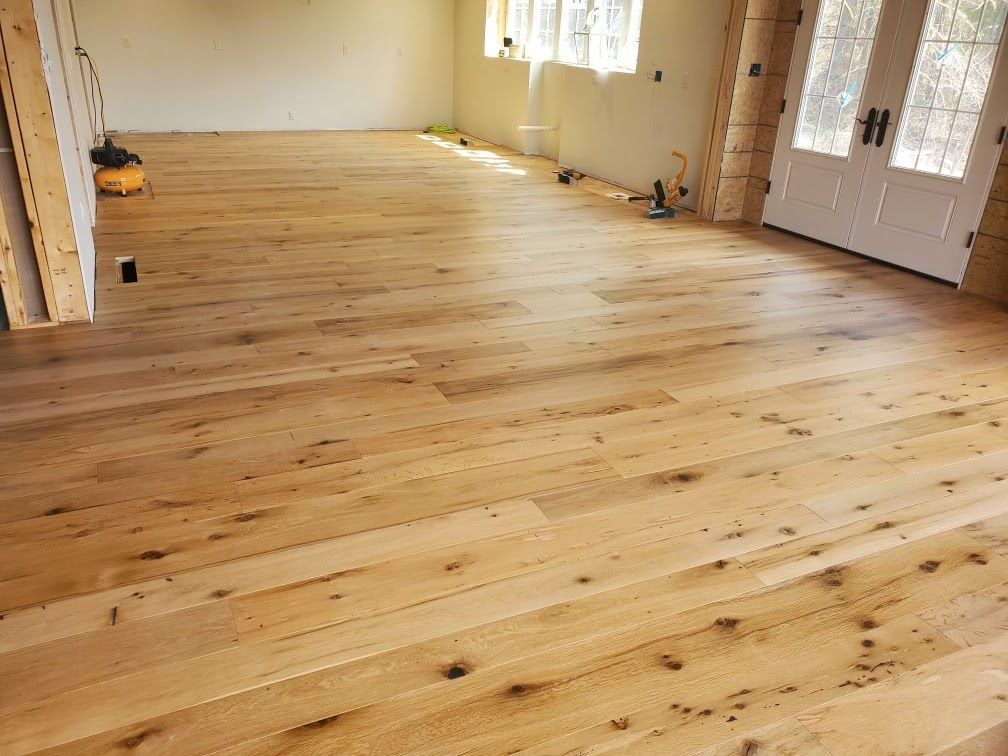Is Reclaimed Wood Flooring the Upgrade Your Home Needs?
Eco-Chic and Durable: Reclaimed Wood Flooring Benefits

Reclaimed wood flooring offers character, sustainability, and a timeless look that new materials can’t easily match. Before choosing this upgrade, it’s important to weigh the benefits and challenges to decide if it’s right for your home.
What Makes Reclaimed Wood Flooring Special
Reclaimed wood flooring is made from wood salvaged from old structures like barns, warehouses, and homes. These materials have a rich history that gives them a unique charm you won’t find in new wood.
Often made from old-growth forests that no longer exist, reclaimed wood can be denser and more durable than today’s lumber. This makes it beautiful, tough, and more valuable as it ages.
The Character Factor
Each piece of reclaimed wood has its own story, shown through nail holes, saw marks, weathering, and an aged finish. This creates a one-of-a-kind look that gives a home personality and warmth, unlike newly built spaces.
While new flooring can mimic this aged look, only real reclaimed wood has these authentic features from years of use. Every plank is unique, featuring natural differences in color and texture.
Performance Benefits
Superior Stability
Reclaimed wood has already adjusted to expansion and contraction over time, making it less likely to shrink or warp after installation.
Exceptional Durability
Old-growth timber is typically stronger and denser than today’s fast-grown wood. This means reclaimed wood can handle heavy use while still looking great.
Proven Longevity
The fact that this wood has lasted for decades or centuries proves how durable it is. When installed and cared for properly, it can outlast most new flooring materials.
Environmental Advantages
Choosing reclaimed wood keeps usable timber out of landfills and reduces the need to cut down more trees. Unlike burning or letting it rot, salvaging each plank keeps its stored carbon intact and avoids releasing it into the air.
Reclaimed flooring also has a smaller environmental impact than new wood since it doesn’t require energy-intensive processes or long shipping distances if sourced locally.
Cost Considerations
Reclaimed wood flooring usually costs 25-50% more than high-end new hardwood. This is due to its limited supply and the extra work needed to prepare it.
However, its durability and timeless style often make it a better value in the long run. These floors rarely need replacement, saving you money over time.
Installation Challenges
Dimensional Variations
Reclaimed boards may have slight differences in size, which can make installation trickier. Professional installers are often recommended to handle these inconsistencies.
Surface Preparation
Some reclaimed wood needs extra work like removing old nails, planing, or refinishing the surface. These steps can add to the cost but ensure better results.
Structural Considerations
Older homes may require updates to the subfloor or
moisture protection before installation. These steps are key for making the wood last.

Things To Consider
Quality Variations Matter
Not all reclaimed flooring is equal. Its history, storage, and preparation all affect how well it looks and performs.
Reclaimed wood from different sources can vary a lot in appearance and quality. For example, barn wood often has a rustic look, while commercial wood is usually more uniform.
Maintenance Requirements
Reclaimed wood floors are surprisingly low-maintenance because they’ve already stood the test of time. The natural aging and patina help hide wear and tear better than new floors.
Sweeping and occasional damp mopping are often enough for upkeep. Over time, the wood continues to age gracefully, adding more character.
Style Compatibility
While reclaimed wood is often linked to rustic or farmhouse styles, it fits just as well in modern or traditional designs. The key is to pick woods, finishes, and installation styles that suit your vision.
For instance, modern furniture can create a striking contrast with the wood’s rustic charm, while traditional décor pairs naturally with its historic look.
Regional Considerations
Your local climate plays a role in how reclaimed wood performs, just as it does with new materials. Considering humidity and temperature changes can help ensure the flooring lasts.
Reclaimed materials that come from similar climates to your home often adjust better. A professional can assess compatibility before installation.
Alternatives
If reclaimed flooring isn’t an option, consider alternatives that offer a similar look. Hand-scraped or wire-brushed wood and cleverly applied stains can mimic the style.
Keep in mind that these options don’t offer the same authenticity or environmental benefits that make reclaimed wood special.
Professional Assessment Value
Working with professionals who specialize in reclaimed wood can make a big difference. They can help you choose quality products, suggest the best installation techniques, and set realistic expectations.
Quality installation ensures your floors are a long-lasting investment, not an ongoing hassle.
Our Experience with Historic Wood
At Bay & Bent, we worked with exceptional reclaimed wood from historic barns across the country. The wide planks in these old structures show the craftsmanship and quality materials that made them last for generations.
Carefully salvaging and installing this wood gives us great respect for the value it can bring to today’s homes.
The Long-Term Perspective
Reclaimed wood flooring is about more than just looks. It’s an investment in sustainability, history, and beauty that never goes out of style. For those who appreciate its unique appeal, the higher cost is often worth it.
Choosing this upgrade depends on your priorities, budget, and love for materials with a story to tell. If you’re ready to bring decades of character into your home, reclaimed wood flooring could be the perfect fit.









